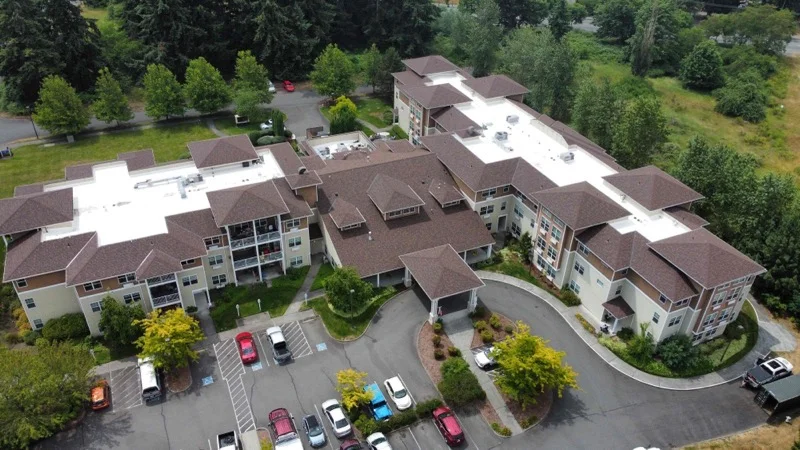Understanding how long it takes to replace a roof is crucial for homeowners and property managers planning for a roof replacement. This question does not have a one-size-fits-all answer, as numerous variables, such as weather conditions, the size of the roof, and the type of roofing material, can significantly affect the timeline. Recognizing the importance of a sturdy roof to the integrity and safety of a building, having a clear insight into the roof replacement process and its duration is essential for planning and executing property maintenance and upgrades effectively.
The article delves into the factors influencing the time it takes to replace a roof, providing a step-by-step guide through the replacement process. It outlines the common challenges and delays that might occur, offering expert insights that help property owners understand how long it takes to replace a roof under various circumstances.
From understanding how long it takes to install a roof to grasping the intricacies of how long a roof replacement takes, readers will be equipped with the knowledge to make informed decisions about their roofing projects, ensuring they are well-prepared for the undertaking ahead.
Factors Influencing Roof Replacement Time
Several factors influence the time required to replace a roof, including the type of roofing material, the size and complexity of the roof, and prevailing weather conditions.
Type of Roofing Material
The choice of roofing material significantly impacts the duration of a roof replacement project. Asphalt shingles, the most common type, typically require less time to install compared to heavier materials like slate or metal. For instance, wooden shingles take about six to eight days for a full replacement due to their aesthetic appeal and installation intricacies.
Concrete tiles, known for their durability, often require the longest installation time, extending over eight days due to the need for an underlying layer before placement.
Size and Complexity of the Roof
The overall size and architectural complexity of a roof also play a crucial role in determining the replacement timeline. A larger home with a complex roof design featuring multiple levels, steep slopes, and numerous valleys will naturally take longer to replace than a smaller, simpler roof. The more intricate the roof, the more time contractors need to cut and lay shingles accurately, adding to the project’s duration.
Weather Conditions
Weather conditions are perhaps the most unpredictable factor affecting roof replacement timelines. Ideal roofing conditions include clear, moderate days. However, adverse weather, such as rain, high winds, or extreme temperatures, can cause significant delays. Rain makes surfaces slippery and unsafe for workers, while extreme heat or cold can affect the efficacy of adhesives and the flexibility of materials like shingles, potentially compromising the quality of installation. Roofing companies often have to adjust their schedules based on local weather forecasts to minimize these impacts.
Understanding these factors helps homeowners and property managers anticipate the duration and complexity of their roof replacement projects, ensuring better planning and execution.
Must Read: Best Time to Replace a Roof: Key Factors to Consider
Free Roof Inspections. Fast. Reliable.
Is your roof ready to weather the storm? Dont risk property damage. Our free roof inspections provide expert analysis to identify potential issues before they become costly problems.
Step-by-Step Roof Replacement Process
Initial Inspection and Estimate
The roof replacement process starts with a thorough inspection by a trusted contractor. They assess the roof’s condition, size, and layout to determine the extent of damage and necessary repairs. This inspection helps to provide an accurate estimate, including the cost of materials and labour and outlines the project’s timeline.
Stripping Off Old Roofing
Once the project begins, the first task is to remove the existing roofing materials. This involves stripping off old shingles, nails, and underlayment. Specialized tools are used to carefully pry up the shingles without damaging the roof deck. All debris is properly disposed of, ensuring a clean surface for the new installation.
Repairs and Preparations
After the old roof is removed, the roof deck is inspected for any signs of damage, such as rot or structural weakness. Necessary repairs or replacements of damaged decking are made to ensure a solid foundation for the new roof. This stage also includes the installation of new underlayment and flashing to provide additional moisture protection and durability.
Installation of New Roof
The final step involves laying down the new roofing materials, which can vary from asphalt shingles to metal roofing, depending on the homeowner’s choice. The installation process is meticulous, ensuring each piece is securely placed and aligned. Once the installation is complete, a detailed inspection is conducted to ensure the integrity and quality of the new roof.
This comprehensive approach ensures the roof replacement is done efficiently and effectively, providing homeowners with a durable and well-constructed roof.
Common Challenges and Delays
Unexpected structural issues often arise once a roof replacement project is underway. Roofing Contractors may discover problems such as sagging joists or compromised trusses that were not visible during initial inspections. These structural concerns can significantly delay the project as they require comprehensive assessments and potentially complex repairs.
Permit and Inspection Delays
Navigating the permitting process can also lead to delays. Obtaining the necessary building permits and scheduling inspections might take longer than anticipated, especially if there are backlogs in local government offices. These administrative hurdles can extend the timeline of a roofing project, affecting overall project completion.
Supply Chain Issues
Supply chain disruptions have become a common challenge, affecting the availability of essential roofing materials like shingles, adhesives, and even structural components. Delays in material delivery can occur due to manufacturing slowdowns, logistical issues, or increased demand, which in turn can push back the roofing project timeline.
Each of these challenges requires careful management and communication between homeowners and roofing contractors to mitigate the impact on the roof replacement process.
Conclusion
Through this How Long Does It Take to Replace a Roof article, we have ventured into the complexities and considerations vital for understanding the timeline of a roof replacement project. From the initial inspection and the removal of old roofing materials to the installation of new roofing and final inspections, every step plays a crucial role in determining the overall time required for a roof replacement.
Key factors, including the type of roofing material, roof size and complexity, and weather conditions, significantly influence the project duration. Moreover, we have seen that unexpected challenges such as structural issues, permit and inspection delays, and supply chain disruptions can extend this timeframe, emphasizing the importance of planning and communication between homeowners and contractors.
As we conclude, the insights provided here aim to arm homeowners and property managers with the knowledge necessary to navigate their roof replacement projects more effectively. By understanding the variables that impact project timelines and preparing for potential challenges, individuals can manage their expectations and make informed decisions that enhance the success of their roofing projects. Whether you’re at the beginning of planning a roof replacement or in the midst of managing one, remember the value of expert advice and thorough preparation in achieving a durable and well-constructed roof that stands the test of time.



